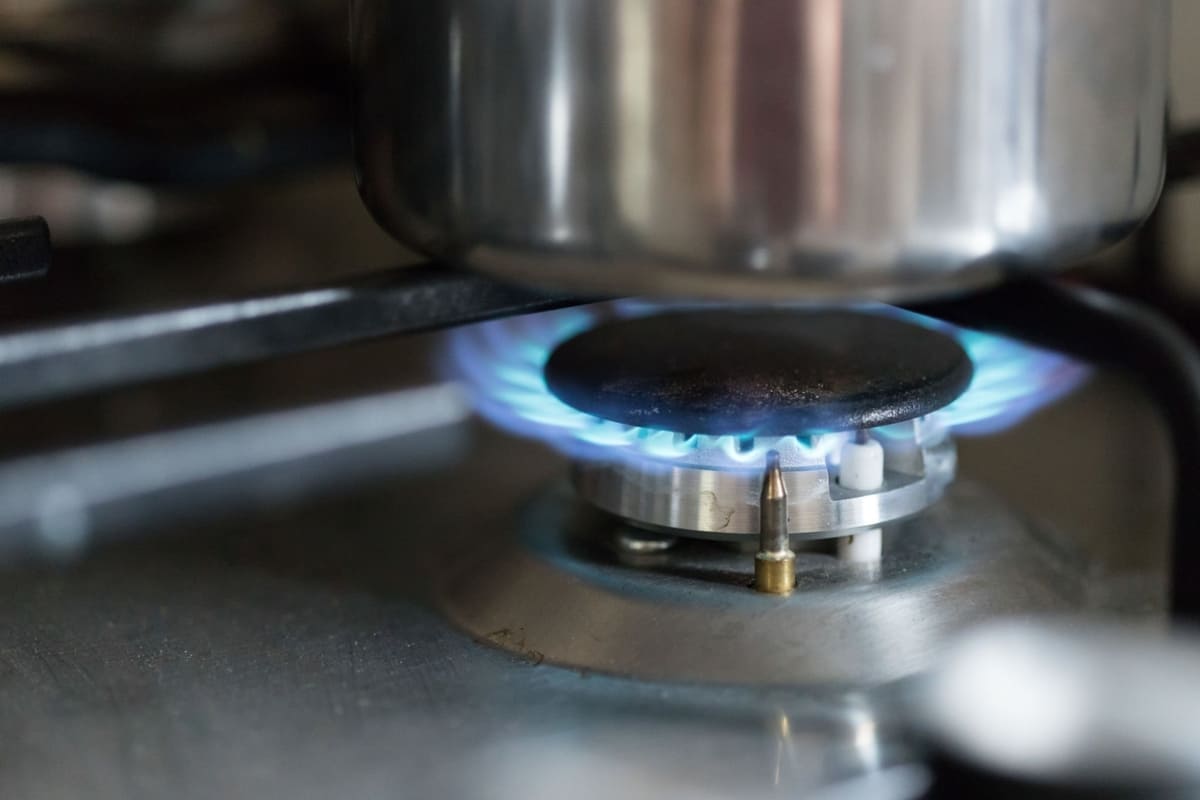Gas stoves have been a popular choice for cooking in households for many years. However, recent studies have shown that gas stoves may pose a significant risk to human health and the environment. Gas stoves burn natural gas, which produces a number of invisible by-products that can be harmful to human health.
One of the biggest concerns for human health is the emission of nitrogen dioxide (NO2), carbon monoxide, formaldehyde, and particulate matter from gas stoves. These pollutants can irritate the eyes, nose, and throat, and can cause respiratory problems such as asthma, bronchitis, and emphysema. In addition, gas stoves can release unburned natural gas, which is more than 90 percent methane, into the atmosphere, contributing to climate change.
Health Risks
Gas stoves are a common household appliance, but they can pose a risk to human health. This section will discuss two major health risks associated with gas stoves: carbon monoxide poisoning and respiratory problems.
Carbon Monoxide Poisoning
Carbon monoxide (CO) is a colorless, odorless gas that can be produced by gas stoves. If a gas stove is not properly ventilated, the CO can build up in the home and cause carbon monoxide poisoning. Symptoms of CO poisoning include headache, dizziness, weakness, nausea, vomiting, chest pain, and confusion. In severe cases, CO poisoning can be fatal.
To prevent CO poisoning, it is important to ensure that gas stoves are properly installed and ventilated. Homeowners should also install CO detectors in their homes and check them regularly to ensure that they are functioning properly.
Respiratory Problems
Gas stoves can also contribute to respiratory problems. When gas is burned, it produces nitrogen dioxide (NO2), a gas that can irritate the respiratory system. Prolonged exposure to NO2 can lead to respiratory problems such as asthma, bronchitis, and emphysema.
Children and the elderly are particularly vulnerable to the respiratory effects of gas stoves. To reduce the risk of respiratory problems, homeowners should make sure that their gas stoves are properly ventilated and avoid using them for extended periods of time. Using a range hood or opening a window while cooking can also help to reduce the amount of NO2 in the home.
Environmental Impact
Gas stoves have a significant impact on the environment, contributing to climate change and indoor air pollution. This section will explore the environmental impact of gas stoves in detail, focusing on their contribution to climate change and indoor air pollution.
Contribution to Climate Change
Gas stoves contribute to climate change by releasing methane into the atmosphere. Methane is a potent greenhouse gas that has a global warming potential 28 times greater than carbon dioxide over a 100-year time frame. According to a study by the Environmental Defense Fund, gas stoves and ovens leak significant amounts of methane, releasing 0.8% to 1.3% of their natural gas into the atmosphere. This extra warming from home methane leaks contributes about a third as much warming as the carbon dioxide generated by combustion of the stove’s natural gas.
Indoor Air Pollution
Gas stoves also contribute to indoor air pollution, releasing harmful pollutants such as nitrogen dioxide (NO2), carbon monoxide, and formaldehyde. These pollutants can cause respiratory problems and exacerbate existing conditions such as asthma. According to the American Lung Association, cooking with gas stoves creates nitrogen dioxide and releases additional tiny airborne particles known as PM2.5, both of which are lung irritants. Nitrogen dioxide has been linked with childhood asthma, and during 2019 alone, almost two million cases worldwide of new childhood asthma were estimated to be linked to gas stoves.
To reduce indoor air pollution, it’s important to ensure proper ventilation while cooking with gas stoves. This can be achieved by opening windows, using exhaust fans, or installing a range hood that vents to the outside. Additionally, regularly cleaning gas stoves can help reduce the buildup of harmful pollutants.
Safety Concerns
Gas stoves have been a common appliance in households for decades. However, there are several safety concerns associated with their use. This section outlines some of the most significant safety concerns related to gas stoves.
Fire Hazards
Gas stoves pose a significant fire hazard. One of the most common causes of gas stove fires is leaving the stove unattended while cooking. If a pot or pan overheats or boils over, it can ignite, causing a fire. Additionally, gas leaks can also lead to fires. Gas leaks can occur due to a damaged gas line or a malfunctioning stove.
To reduce the risk of fires, it is essential to follow safety guidelines when using a gas stove. These guidelines include:
- Never leave the stove unattended while cooking
- Keep flammable objects away from the stove
- Use a timer to remind you to check on food regularly
- Have your gas stove inspected regularly by a professional
Burn Injuries
Gas stoves can also cause burn injuries. The high heat produced by gas stoves can cause severe burns if someone touches a hot stove or comes into contact with a hot pot or pan. Additionally, gas stoves can also cause burns if someone accidentally ignites their clothing while cooking.
To prevent burn injuries, it is essential to take precautions when cooking with a gas stove. These precautions include:
- Using oven mitts or pot holders when handling hot pots and pans
- Keeping loose clothing away from the stove
- Turning pot handles away from the edge of the stove to prevent accidental spills
- Teaching children about the dangers of gas stoves and how to use them safely
Alternative Options
When it comes to cooking, gas stoves have been a popular choice for many years. However, due to the negative impact on both the environment and health, many people are now looking for alternative options. In this section, we will explore two popular alternatives: electric stoves and induction cooktops.
Electric Stoves
Electric stoves are a common alternative to gas stoves. They are easy to use and often come with a variety of features such as timers and self-cleaning options. Electric stoves are also safer than gas stoves as they do not emit harmful pollutants into the air.
One downside of electric stoves is that they can take longer to heat up than gas stoves. Additionally, they can be more expensive to operate as they use more energy. However, electric stoves are generally easier to clean than gas stoves, making them a great option for those who value convenience.
Induction Cooktops
Induction cooktops are another popular alternative to gas stoves. They use electromagnetic energy to heat up the cookware directly, rather than heating up the air around it. This means that induction cooktops are more energy-efficient than both gas and electric stoves.
Induction cooktops are also safer than gas stoves as they do not emit harmful pollutants into the air. Additionally, they are easy to use and often come with a variety of features such as timers and temperature control.
One downside of induction cooktops is that they can be more expensive to purchase than gas or electric stoves. Additionally, not all cookware is compatible with induction cooktops, so you may need to purchase new cookware if you decide to make the switch.
Conclusion
In conclusion, gas stoves can pose health risks to individuals and contribute to climate change. Burning natural gas produces carbon dioxide, which is a greenhouse gas and contributes to global warming. Additionally, unburned natural gas contains pollutants such as nitrogen oxides and carbon monoxide, which can be harmful to human health.
While gas stoves have been a popular choice for cooking for many years, research has shown that they can negatively impact indoor air quality. Using a gas stove without proper ventilation can lead to increased exposure to pollutants, which can cause respiratory issues and aggravate asthma symptoms.
However, there are steps that can be taken to mitigate the health risks associated with gas stoves. Installing a range hood and ensuring proper ventilation can help reduce exposure to pollutants. Additionally, switching to an electric stove or induction cooktop can eliminate the emissions associated with burning natural gas.
Ultimately, it is important for individuals to weigh the potential health risks and environmental impacts when considering their choice of cooking appliance. By taking steps to reduce exposure to pollutants and exploring alternative options, individuals can help promote healthier indoor air quality and contribute to efforts to combat climate change.



